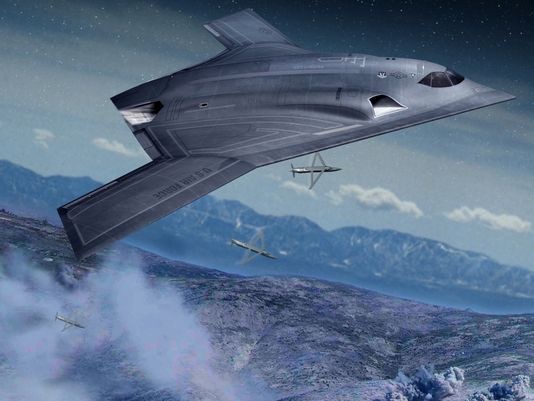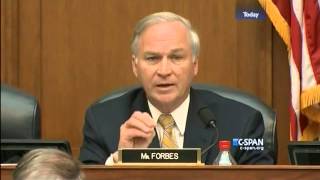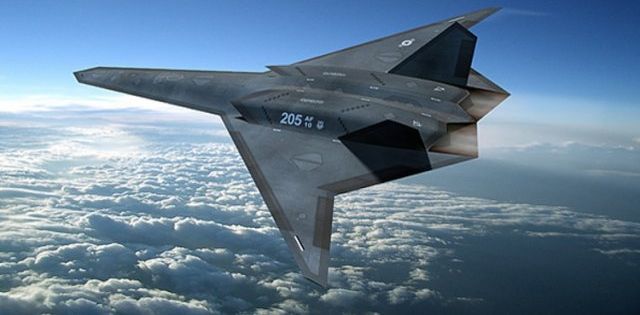Why America Needs The Long Range Strike Bomber: Rep. Forbes
Posted on
As the Pentagon prepares to announce the winner of one of its most significant contracts since the F-35 contract award in 2001 — the Long Range Strike Bomber — it faces a myriad of challenges and very high expectations. A Boeing-Lockheed Martin team is competing against Northrop Grumman, builder of the B-2 bomber, for the $25 billion prize. The following commentary by Rep. Randy Forbes conveys the views of one of the program’s most important congressional watchdogs. The Editor.
The U.S. Air Force is expected to announce a contract award for the development and production of its secretive next-generation Long Range Strike Bomber (LRS-B) soon. This is being eagerly awaited by many interested parties. For strategists and proponents of air power, the LRS-B program promises to reinvigorate long-range surveillance and strike capabilities that have been dwindling for decades. For industry, the award to one of two teams competing for the massive contract holds the potential to reshape the aerospace sector. And for fiscal watchdogs, the new bomber threatens to join the litany of aircraft entering service late-to-need and over-budget.
For all these reasons, the LRS-B program deserves close attention from Congress, and especially the House Armed Services Committee’s seapower and projection forces subcommittee, which oversees Air Force bomber, tanker, and airlift programs. (Mr. Forbes, is, of course, chairman of the subcommittee. The Editor) As a classified, unconventionally-managed program planned to cost an average of $550 million (in 2010 dollars) per aircraft, the program warrants our strict scrutiny. As a top Air Force and Defense-wide acquisition priority and a critically-needed platform for projecting American power over the next forty years or longer, it also deserves Congress’ strong support.
Long-range bomber aircraft have been a central element of America’s power projection forces since the Second World War. But after several decades of relative neglect, the Air Force’s bomber fleet is now the smallest and oldest it has ever been. Overall, our 159 bombers have an average age of 39 years—older than most of their pilots—and less than half of the force is “mission capable” in at least one mission area. Of these aircraft, only 20 B-2s are “stealth bombers” capable of penetrating the integrated air defense systems being fielded (and exported abroad) by countries like Russia and China. Our 139 older B-1 and B-52 bombers, on meanwhile, are best suited for operating in low-threat environments and launching standoff missile strikes. While newer multi-role fighters like the F-22 and F-35 may be able to penetrate modern defenses, they lack the range, endurance, and payload needed to operate from bases outside the range of enemy missiles and hold at risk the larger and more challenging target sets our military is likely to face in the future.
As a result, the United States has a serious shortfall in long-range penetrating strike capability and capacity that affects our security in several important ways. First, by limiting our ability to respond promptly to aggression and hold at risk high-value targets (such as enemy leaders or weapons of mass destruction) inside defended airspace, it emboldens our strategic competitors and undermines deterrence. Second, by that same token, it undermines the confidence of our allies and partners that we can respond rapidly and decisively if and when they are attacked. Third, it forces short-range U.S. air forces to operate from bases within the range of enemy missiles and other threats, playing to the strengths of our competitors’ anti-access strategies and imposing upon the United States the high costs of countering them.
Fortunately, the Air Force’s long range strike program appears to be on track to deliver a next-generation aircraft that will play a key role in counter anti-access strategies and sustaining the United States’ ability to project power into contested environments for decades to come. Six years after Secretary Gates approved the program, the Air Force appears to have wisely settled on a requirement set that will meet commanders’ needs for range, payload, and survivability at a relatively affordable price.
That last point is key. Although the LRS-B will not be inexpensive by any taxpayer’s standards, the Air Force appears to be wisely leveraging “off-the-shelf” components designed for other aircraft and “open” architectures and mission systems that can be easily upgraded. These approaches should help the winning vendor deliver and sustain the aircraft we must have at the lowest possible cost.
Keeping that per-unit cost to a minimum will be the shared task of Congress and Air Force leadership in the years ahead. Stability in the bomber’s requirements, rate of production, and total procurement quantity will be needed to keep acquisition costs down and sustain public support for the program. Congress, for its part, must commit to protecting the nascent program from the impacts of continuing resolution and other fluctuations in the budget. The Air Force, in turn, must manage the expectations of Congress and the American people by accurately estimating and reporting the costs, as well as the benefits, of the LRS-B program. America’s new bomber will not be cheap, but it is a worthwhile and strategically-critical investment. Our nation needs a new bomber, and that bomber deserves Congress’ close scrutiny, as well as its strong support.
Rep. J. Randy Forbes,, a Virginia Republican, is chairman of the House Armed Services Seapower & Projection Forces subcommittee.
Subscribe to our newsletter
Promotions, new products and sales. Directly to your inbox.



